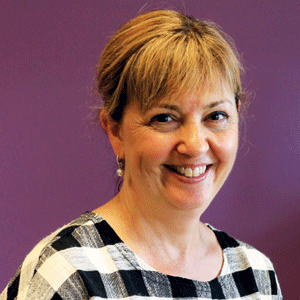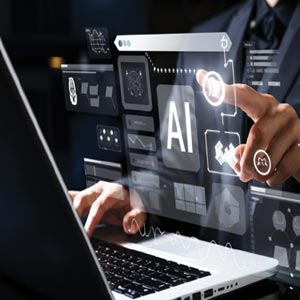THANK YOU FOR SUBSCRIBING

Remote Learning to Shape the Future of Education
Soon Keow Tan, Director, School Of Information Technology, Nanyang Polytechnic (Nyp)


Soon Keow Tan, Director, School Of Information Technology, Nanyang Polytechnic (Nyp)
Classrooms have traditionally been the backbone of teaching and learning. And in the context of a college or institute of higher education, there is more value from the physical interactions between individuals within the classroom space – whether lecturers, tutors, or peers.
When there is hands-on demonstration and training sessions or there is a lively discussion with quick exchanges of ideas and possibilities of novel applications, this is where the magic happens - learning becomes fun, lived, and experienced.
In 2020, the world changed dramatically. Classrooms all over the world were shuttered for fear of spreading what was a potentially fatal plague. We had to find new solutions overnight.
Prior to COVID-19, there were online classes or distance learning classes, but mainstream institutions like ours were in no big rush. We were all slowly integrating online elements into learning, cherry picking which elements would work best. It was a remarkable watershed in that we no longer had a choice, nor did we have the luxury of time to decide what would work best. In Singapore, our equivalent of a lockdown meant that we had to pivot all classes, whether lectures or tutorials, almost overnight to virtual sessions.
I can say that the experience chastened us as educators. We had to rethink teaching and learning – and yes, we ourselves had to learn lessons the hard way. Simply appearing on screen and rattling off a lecture did not translate well. If you cannot demonstrate how something works in real life, showing it on a screen requires one to think of camera angles, what exactly to show, and how to concentrate young minds on critical functionalities.
Remote Learning Enables Flexibility and Convenience
Three years on. I can say that we have learnt much. At my institution, we experimented with animations and 3D VR images to show the workings of chemical plants. We gamified our lessons, created quizzes and crafted escape rooms so that complex concepts would sink in through play.
We experimented with software which would let us do real time mark ups on drawings, co-create code online, among others.
All this because we learnt that with teaching and learning in the virtual space, there must be more interactivity that is targeted planned and managed. It cannot happen by chance, and the learning objectives must be front and centre of the planned virtual experience.
Remote learning – which I define as both synchronous and asynchronous sessions that are delivered online – is a mainstay for the education industry today. It is a big part of our lesson plans and it has proven popular with learners. The proverbial door can no longer be shut and how we teach and learn has irrevocably changed.
Learners are given the time and space to complete their modules in their own time. This means that students can rewatch lectures to revisit portions that they are struggling to understand, at their own pace. They may also view these lectures at any time, even while taking the public commute to go home. This also allows for more detailed note-taking.
Our adult learners have to juggle various commitments, both at work, and at home. And while they’ve set aside time for synchronous classes, unforeseen circumstances might still limit their face time in class. We have hence made available a live video streaming option for learners who are unable to come onto campus for synchronous classes, whether due to work or family exigencies. Through two-way video, they can continue to interact with their lecturer and fellow learners in class.
This is particularly useful in today’s context, where global travel has resumed and we have seen an increase in learners being called up for short work assignments overseas within a short lead time.
I make the point again that the baseline for remote learning to work in any institution is that it is not a lift and shift of the lessons conducted in classrooms. Educators must have taken the time to inject activities that make it interactive, understand how to chunk the lectures and deliberately incorporate learning outcomes into the lesson planning.
The second main thing that must happen for Remote Learning to take root is to apply analytics.
With lessons and lectures delivered online, you will have a wealth of data. Are you examining whether certain chunks are being rewatched very often or are your learners slower to consume certain modules? Then find out whether it is because the information is not explained in a way that is easy to consume online or whether the delivery is not working in one way or another.
Educators Should Continue To Leverage Technology To Enhance The Learning Experience. They Need To Have A Good Understanding On The Latest Edutech Trends, Ride The Tech Wave, And Make Each Learning Opportunity A Memorable On
Quizzes and surveys can complement this process, and one can check in and verify what parts of the lesson plan are helping or hindering your learners. And if implemented in a timely fashion, the surveys can help identify struggling students and there can be timely intervention to help them get through certain topics.
Remote Learning Encourages Self-Directed Learning
The skills required to succeed in the workforce are changing rapidly. The launch of our Professional Competency Model (NYP-PCM) in 2020 has seen us working even closer with our industry partners to co-design, co-develop and co-deliver curriculum to our learners, ensuring that they are equipped with industry-relevant skills needed to excel in their role.
And while we ensure that our curriculum meets the needs of the industry, we also want to inculcate a sense of curiosity amongst our learners, for them to explore and grow beyond their domain expertise.
But self-directed learning comes with its own set of challenges. How do we get learners to embark on self directed learning on their own accord? How do they choose areas that complement their course of study, to help them to develop new and parallel skills?
Our long-term industry partners have been instrumental in helping us heed this call. For a start, we’re working with Oracle Academy, which has kindly shared their resources and courseware with our learners. This allows our learners access to high-quality learning resources, for self-directed learning in their interest areas at their own time, at no added cost. We believe this is the first step in getting our learners to kick-start their propensity for lifelong learning, outside the classroom.
This also complements our model, where learners can stack their micro-credential modules over a period of time, leading to an industry-recognised certification.
E-Assessments Support the Full Rollout of Remote Learning
Without robust assessments, remote learning will not be an effective tool for teaching delivery, as we cannot measure the outcomes. At NYP, our end-to-end process means that assessments can also be done online, remotely. From the traditional pen and exam booklet method, we’ve since rolled out an e-Assessment method with sufficient enhancements for assessment integrity.
For one, learners use Lockdown Browsers when taking e-Assessments. This extension prevents learners’ access to browsers and applications including messaging, screen sharing, and virtual machines, thereby disallowing them to search for answers concurrently during their examination. To validate that the learner is taking the examination themselves without the aid of another electronic device, learners are to have their mobile phones dialled into a specific video call pre-set by their lecturers, with the cameras facing them from a distance.
Through this two-pronged approach, we can ensure that assessments can be conducted with full integrity, whether on-campus, or remotely.
Future of Remote Learning
Ultimately, there is huge potential in what remote learning can bring to the education sector.
And while remote learning does bring about benefits to learners, there is still a need for some form of human touch.
Educators should continue to leverage technology to enhance the learning experience. They need to have a good understanding on the latest edutech trends, ride the tech wave, and make each learning opportunity a memorable one.
Remote learning has opened a new world of possibilities for all of us. The future of education is here, with remote learning leading the charge.
Weekly Brief
I agree We use cookies on this website to enhance your user experience. By clicking any link on this page you are giving your consent for us to set cookies. More info
Read Also
Transforming Risk Management into Strategic Business Advantage
Designing Future-Ready, People-Centered Workplaces
Shaping Customer Experience Through Smarter Logistics
Storing Physical Cargo vs Storing Digital Data
Driving Culture Change to Power Digital Innovation
The Data Leader's Playbook for Smarter Business Decisions
Advancing Retail through E-Commerce, Cloud and Cyber security
From Code To Impact: Leading Enterprise Ai With Purpose




















